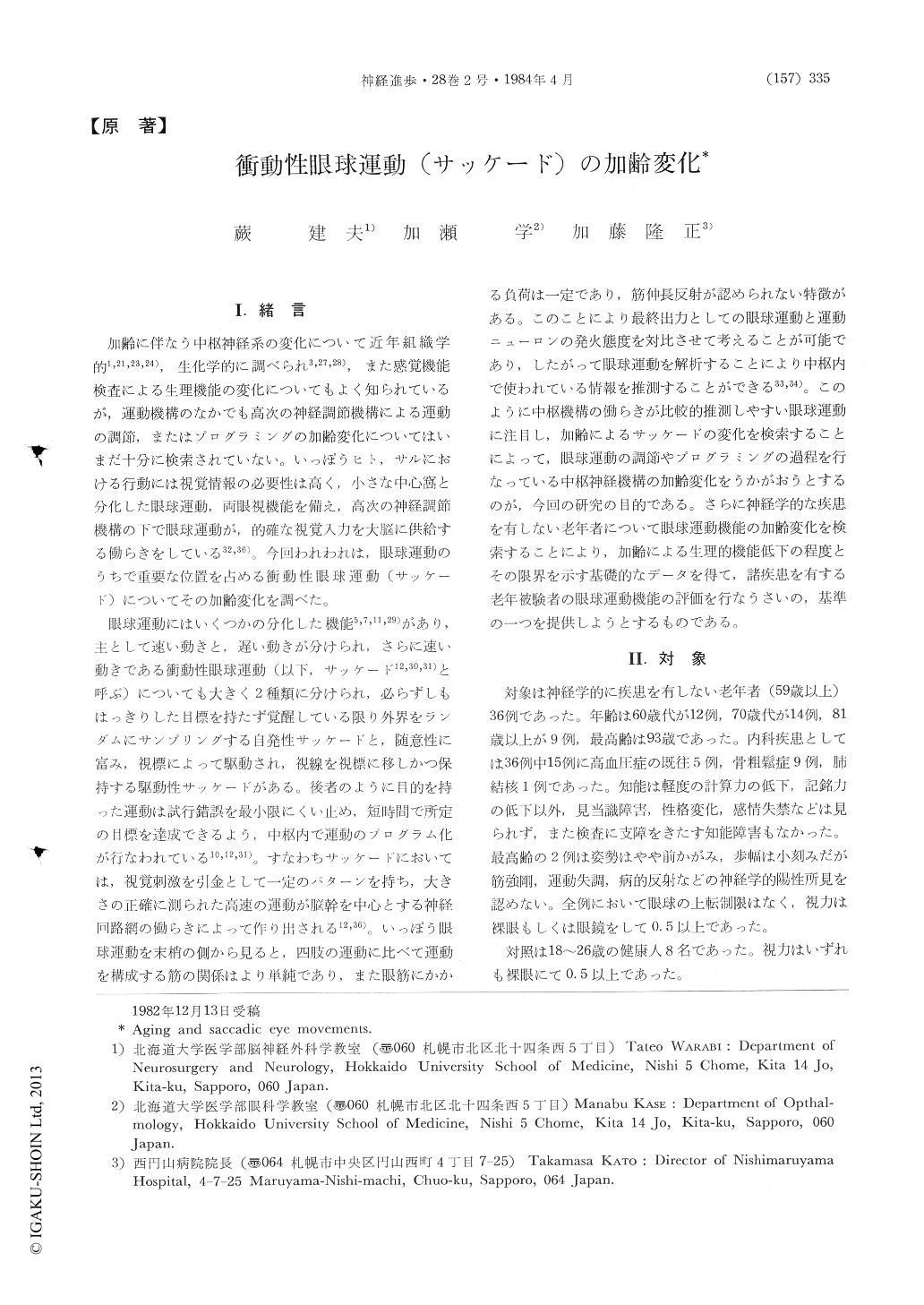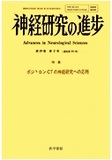Japanese
English
- 有料閲覧
- Abstract 文献概要
- 1ページ目 Look Inside
I.緒言
加齢に伴なう中枢神経系の変化について近年組織学的1,21,23,24),生化学的に調べられ3,27,28),また感覚機能検査による生理機能の変化についてもよく知られているが,運動機構のなかでも高次の神経調節機構による運動の調節,またはプログラミングの加齢変化についてはいまだ十分に検索されていない。いっぽうヒト,サルにおける行動には視覚情報の必要性は高く,小さな中心窩と分化した眼球運動,両眼視機能を備え,高次の神経調節機構の下で眼球運動が,的確な視覚入力を大脳に供給する働らきをしている32,36)。今回われわれは,眼球運動のうちで重要な位置を占める衝動性眼球運動(サッケード)についてその加齢変化を調べた。
眼球運動にはいくつかの分化した機能5,7,11,29)があり,主として速い動きと,遅い動きが分けられ,さらに速い動きである衝動性眼球運動(以下,サッケード12,30,31)と呼ぶ)についても大きく2種類に分けられ,必らずしもはっきりした目標を持たず覚醒している限り外界をランダムにサンプリングする自発性サッケードと,随意性に富み,視標によって駆動され,視線を視標に移しかつ保持する駆動性サッケードがある。後者のように目的を持った運動は試行錯誤を最小限にくい止め,短時間で所定の目標を達成できるよう,中枢内で運動のプログラム化が行なわれている10,12,31)。
Abstract
Visual guided saccade were quantitatively studied on 36 subjects with ages of more than 59 years who showed no neurological disorders and eight healthy young adults of 18 to 26 years old by using DC-EOG. The aged subjects were clas-sified into three groups on the basis of reaction times. In the first group (24 subjects), reaction times were longer around 100 msec than control values obtained from young adults (235 msec). In the second group (9 subjects) the reaction times varied greatly in individual trials and thus had significantly large variance.

Copyright © 1984, Igaku-Shoin Ltd. All rights reserved.


